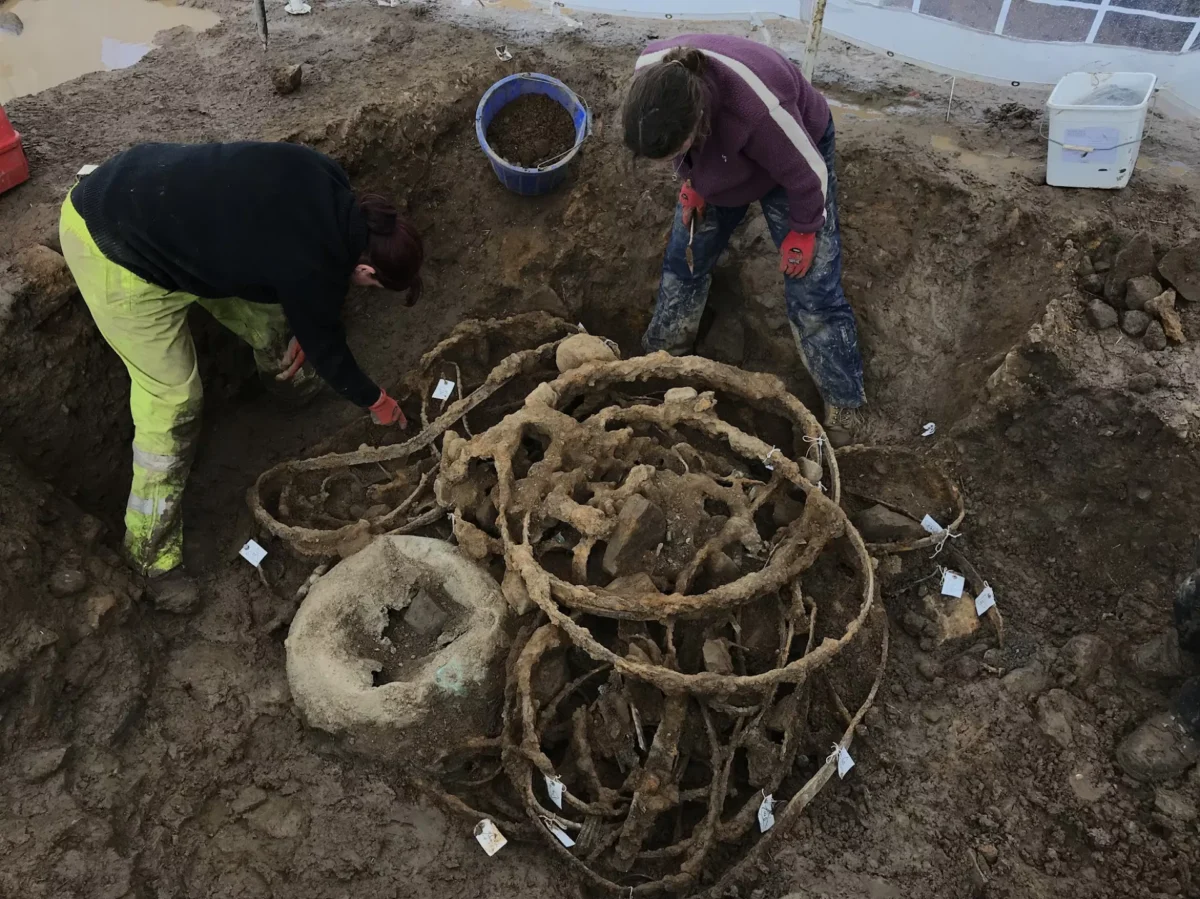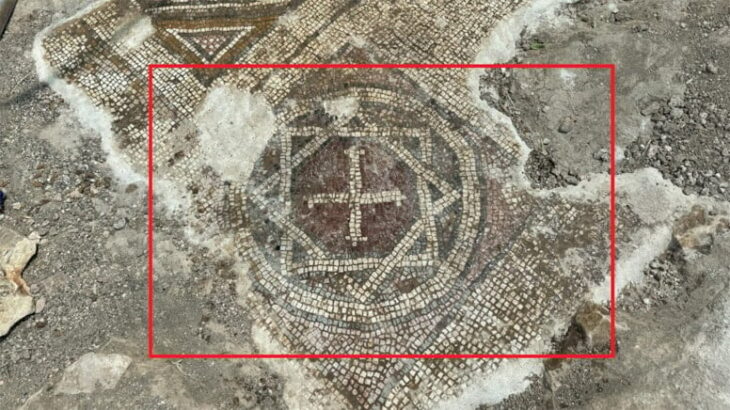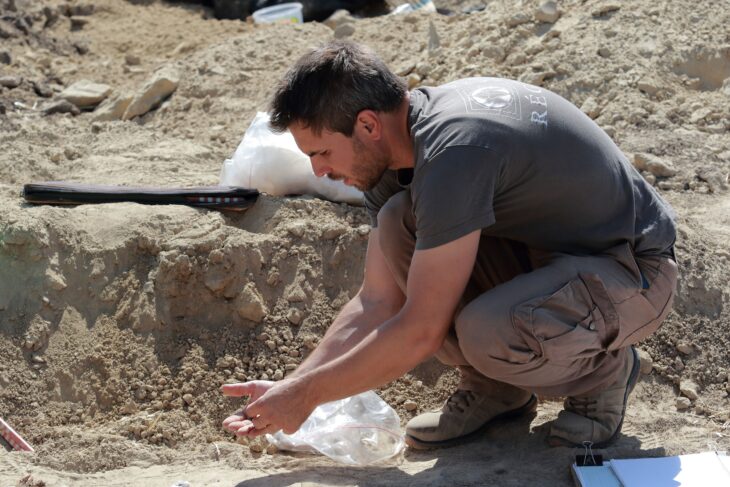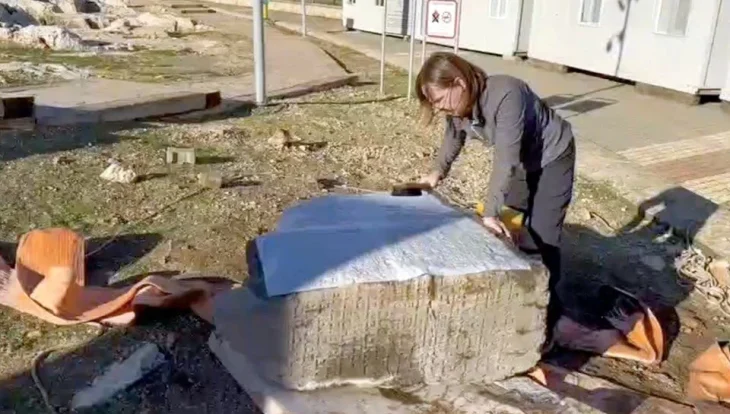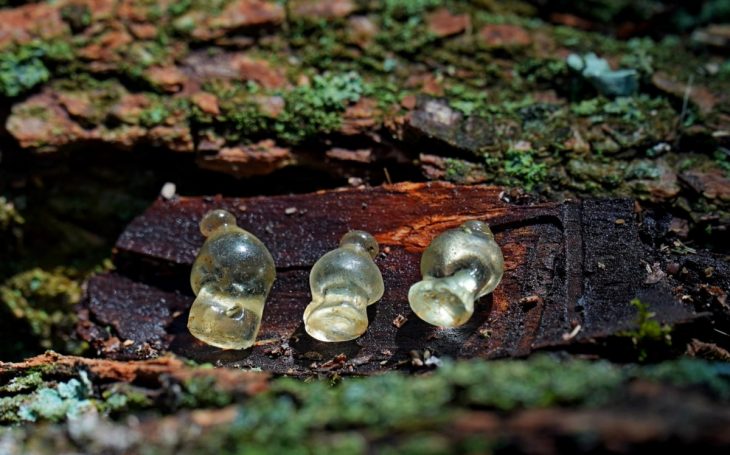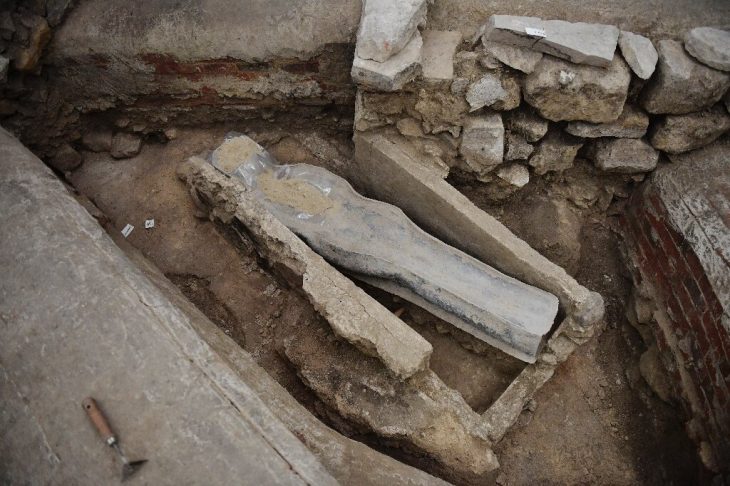In a remarkable archaeological breakthrough, the Melsonby Hoard has emerged as one of the most significant Iron Age discoveries in the UK, promising to transform our understanding of life in Britain around 2,000 years ago. Discovered by metal detectorist Peter Heads in December 2021 near the village of Melsonby in North Yorkshire, this treasure trove consists of over 800 artifacts that provide a unique insight into the social and cultural dynamics of Iron Age society.
The hoard, described as an “archaeological time capsule,” was meticulously excavated and analyzed by a team of experts, revealing a wealth of information about the period. Among the remarkable finds are the remains of at least seven four-wheeled wagons and two-wheeled chariots, an unusual discovery that suggests the presence of an elite class in Iron Age Britain. The intricate designs of the harnesses, adorned with Mediterranean coral and colored glass, indicate that these objects were not merely functional but also served as symbols of wealth and status.
Dr. Sophia Adams, a curator at the British Museum, emphasized the significance of the hoard, stating, “This is the largest single deposit of horse harness and vehicle parts excavated in Britain.” The quality and variety of the items, including ceremonial spears and ornate vessels, highlight the sophistication of the society that produced them. One particularly intriguing find is a lidded vessel believed to have been used for mixing wine, which was deliberately buried at the bottom of a large ditch, hinting at ritualistic practices.
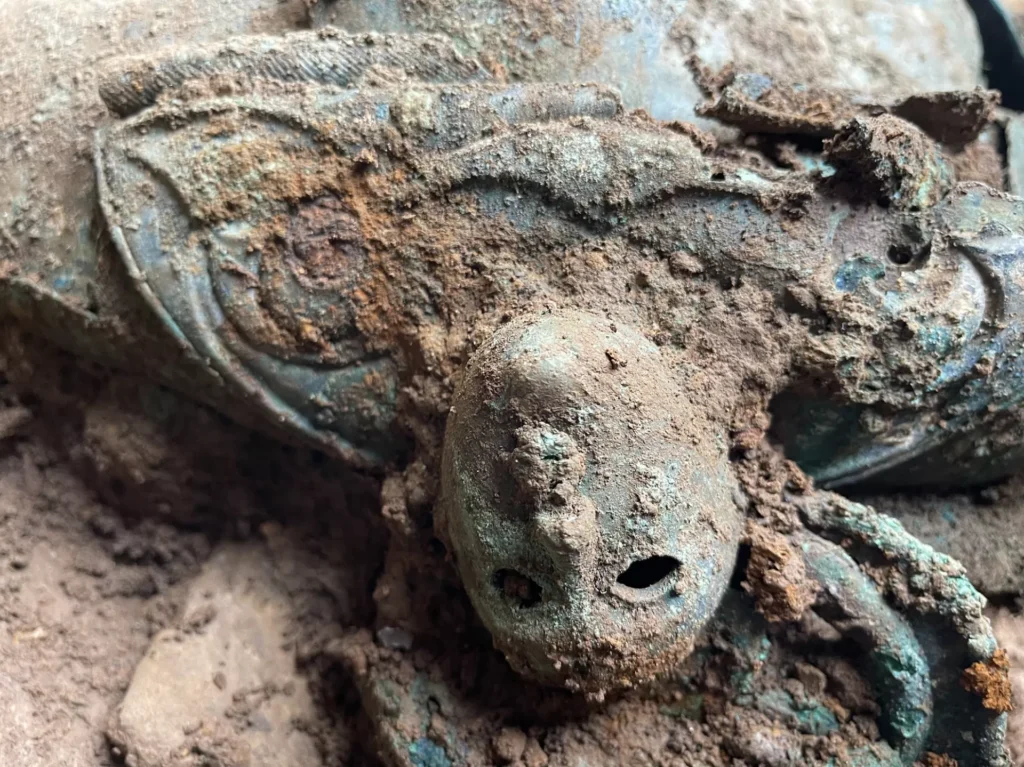
The condition of the artifacts has sparked intense scholarly debate. Many items were found intentionally broken or burned, suggesting a ritualistic act of destruction that raises questions about the beliefs and practices of Iron Age communities. Was this a display of power, a funerary rite, or an offering to deities? The absence of human remains at the site leaves these questions open to interpretation, inviting further exploration into the spiritual and social frameworks of the time.
Moreover, the Melsonby Hoard has reignited discussions about Britain’s connections to continental Europe prior to the Roman conquest. While some artifacts bear similarities to previously discovered items in Britain, others exhibit clear European influences, suggesting extensive trade networks and cultural exchanges that may have existed during the Iron Age.
📣 Our WhatsApp channel is now LIVE! Stay up-to-date with the latest news and updates, just click here to follow us on WhatsApp and never miss a thing!!
Valued at £254,000 (€304,000), the Melsonby Hoard is currently housed at Durham University, where it is undergoing stabilization and cataloging. The Yorkshire Museum has launched a fundraising campaign to ensure that this invaluable collection remains in the UK and is made accessible to the public, allowing both scholars and enthusiasts to engage with this extraordinary glimpse into the past.
As researchers continue to analyze the hoard, its implications for our understanding of Iron Age Britain are profound. The Melsonby Hoard not only sheds light on the material culture of the time but also challenges existing narratives about social hierarchy, trade, and cultural identity in pre-Roman Britain. This discovery stands as a testament to the rich and complex history of the Iron Age, inviting us to reconsider the lives of those who came before us.
Cover Image Credit: Excavation and recording of the deposit in Trench 1, showing the stacked iron tyres (some bent and misshapen) and large, upside-down cauldron. Credit: Department of Archaeology, Durham University

